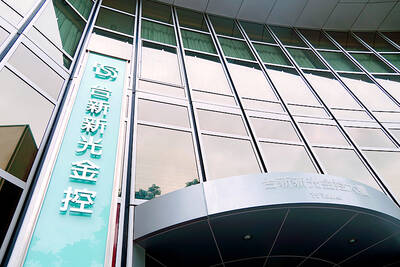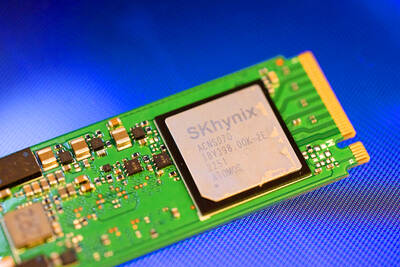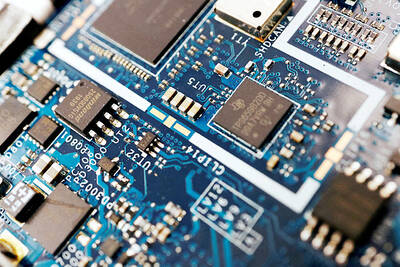Growing demand for digital music players and the soaring popularity of electronic entertainment devices will benefit domestic contract manufacturers, an industry watcher said yesterday.
"MP3 players have emerged while the personal digital assistant (PDA) market was eaten up by smartphones as handsets evolved," said George Wu (
"MP3 players will be able to play not only digital music but also films and be integrated with simple functions that PDAs can provide," Wu said.
The electronic gadgets providing entertainment are expected to do well in the market, while smartphones possessing the functions of both handsets and PDAs will become stronger, he added.
The market began to boom in the middle of last year due to the popularity of online music among young Internet users, media attention as well as promotions by upstream industry such as hard disc makers, according to a BenQ Corp (
"This is a hot market with great potential for growth in the next one or two years," Wu said. "This year's Cebit show displayed a number of solutions in this regard as well."
Eyeing the booming business for entertainment gadgets, BenQ made inroads to the market by launching a line of flash-based MP3 players, Joybee, in April last year.
Worldwide shipments of digital music players are expected to rise to 20 million units this year from 15 million units last year, according to market researcher International Data Corp (IDC).
The industry itself is even more upbeat, estimating the market will reach 40 million units this year, the BenQ official said.
In view of the brisk sale of digital music players worldwide, Dell Inc decided to showcase its upgraded entertainment devices in the second half of this year.
Dell is banking on the new product to compete with the market leader, Apple Computer Inc's iPod. Apple has sold more than 2 million units since the product's launch in 2002.
The Dell device, named JukeBox, is designed to be a multimedia player rather than simply an MP3 player, as it allows users to download and play films. It features a 3.5-inch thin film transistor liquid crystal display and a 1.8-inch hard disk.
The company reportedly outsourced its MP3 orders to Wistron Corp (

On Tuesday, US President Donald Trump weighed in on a pressing national issue: The rebranding of a restaurant chain. Last week, Cracker Barrel, a Tennessee company whose nationwide locations lean heavily on a cozy, old-timey aesthetic — “rocking chairs on the porch, a warm fire in the hearth, peg games on the table” — announced it was updating its logo. Uncle Herschel, the man who once appeared next to the letters with a barrel, was gone. It sparked ire on the right, with Donald Trump Jr leading a charge against the rebranding: “WTF is wrong with Cracker Barrel?!” Later, Trump Sr weighed

HEADWINDS: Upfront investment is unavoidable in the merger, but cost savings would materialize over time, TS Financial Holding Co president Welch Lin said TS Financial Holding Co (台新新光金控) said it would take about two years before the benefits of its merger with Shin Kong Financial Holding Co (新光金控) become evident, as the group prioritizes the consolidation of its major subsidiaries. “The group’s priority is to complete the consolidation of different subsidiaries,” Welch Lin (林維俊), president of the nation’s fourth-largest financial conglomerate by assets, told reporters during its first earnings briefing since the merger took effect on July 24. The asset management units are scheduled to merge in November, followed by life insurance in January next year and securities operations in April, Lin said. Banking integration,

LOOPHOLES: The move is to end a break that was aiding foreign producers without any similar benefit for US manufacturers, the US Department of Commerce said US President Donald Trump’s administration would make it harder for Samsung Electronics Co and SK Hynix Inc to ship critical equipment to their chipmaking operations in China, dealing a potential blow to the companies’ production in the world’s largest semiconductor market. The US Department of Commerce in a notice published on Friday said that it was revoking waivers for Samsung and SK Hynix to use US technologies in their Chinese operations. The companies had been operating in China under regulations that allow them to import chipmaking equipment without applying for a new license each time. The move would revise what is known

Artificial intelligence (AI) chip designer Cambricon Technologies Corp (寒武紀科技) plunged almost 9 percent after warning investors about a doubling in its share price over just a month, a record gain that helped fuel a US$1 trillion Chinese market rally. Cambricon triggered the selloff with a Thursday filing in which it dispelled talk about nonexistent products in the pipeline, reminded investors it labors under US sanctions, and stressed the difficulties of ascending the technology ladder. The Shanghai-listed company’s stock dived by the most since April in early yesterday trading, while the market stood largely unchanged. The litany of warnings underscores growing scrutiny of